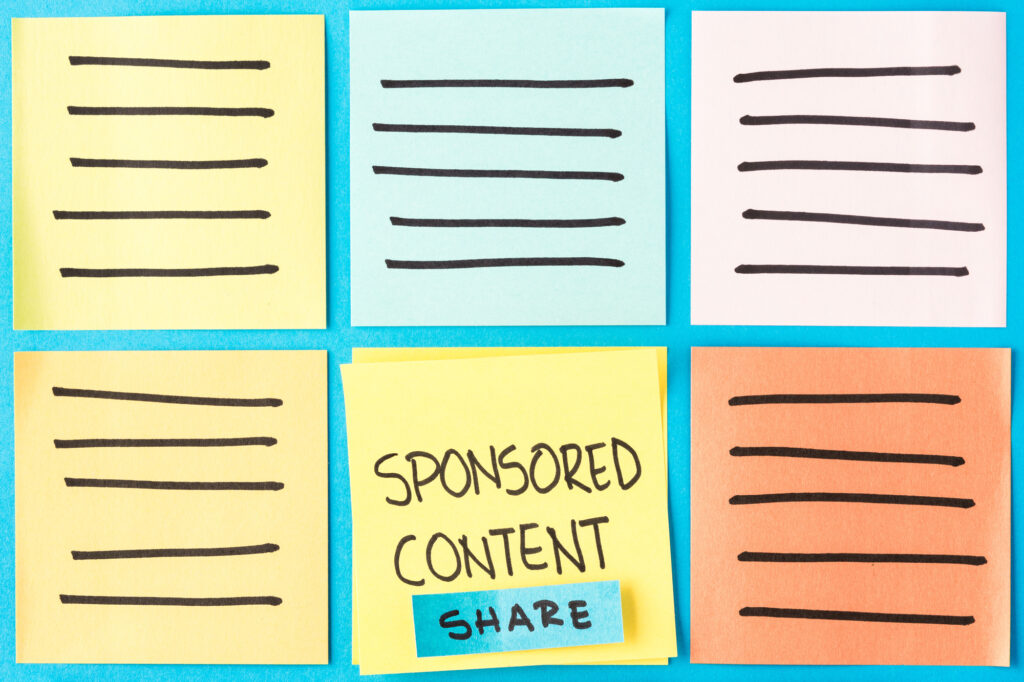You have your own favorite bloggers, influencers, and YouTubers. Why wouldn’t your e-commerce customers be the same?
The marketing industry is already tuned in to your relationship with your favorite influencers and publications, and they’re using it to drive the growth of sponsored content. So much so, those companies are poised to spend $8 billion on this strategy alone in 2019, and the top 100 Publishers worldwide are expected to net more than $15 billion in revenue by 2022.
What’s the takeaway?
Trust, authenticity, and authority sell. That’s why sponsored content should be a top priority for your content marketing. In this article, you’ll learn how to leverage this strategy by identifying the right influencers, content, and publications for your eCommerce brand.
What Is Sponsored Content?
Before delving into where and who you should publish your content with, it’s important to understand what sponsored content is and isn’t.
Also known as branded content, sponsored content is any blog post, social media content, editorials, magazine articles, and video that’s sponsored by a particular brand. This strategy is an inbound marketing method that uses informational content to draw consumers to your e-commerce products. But there’s an art to getting it just right.
Sponsored content is not spam. However, that doesn’t stop some web visitors from perceiving your branded content as spam or irrelevant. Why?
According to a recent study, over 66% of web users surveyed said they were less likely to read an article if it looks “obviously” sponsored by a brand. Then why the high spend on branded content? Why does influencer marketing have an ROI that’s 11x higher than other marketing strategies?
It comes back again to trust, authenticity, and authority.
Trust Matters
Trust is a cornerstone of consumer psychology. One of the earliest forms of marketing is word-of-mouth which is built on trust between consumers and their social circles. In fact, 92% of consumers surveyed still trust word-of-mouth recommendations, which has only grown more powerful since the advent of social media.
This is why social media influencers play such a powerful role in branded content strategies; their trust factor is high, while the brands themselves struggle to build trust with customers on their own.
How low are we talking?
Half of the consumers surveyed don’t believe brands are honest. In fact, 42% surveyed are less trusting of brands than they were 20 years ago. Contrast this with the 60% of subscribers that buy products directly from YouTuber recommendations. Plus, over a third of all Twitter users actively engage with the influencers they follow.
The takeaway? Consumers are more likely to trust their favorite influencers over brands themselves. And 94% of marketers can attest to this.
How to Find the Right Platforms for Your Branded Content
Not just any influencer, blogger, or publication is the right fit for your brand. It’s important to select an influencer who’s appropriate for your niche. However, you may also want to use an influencer to attract a new demographic like millennials or women.
That’s why it’s important to understand what you want from branded content and to set marketing objectives for your sponsored content strategy.
Ask yourself the following questions before reaching out to influencers and publications:
- Are you looking to increase brand awareness?
- How many new leads are you hoping to receive from sponsored content?
- Which of your products are best suited for sponsored posts?
- Do you are target influencers and publications have a good reputation?
- Which publications are your target market reading which influencers or writers are they following?
These are just a sampling of the questions you need to ask to identify the right platforms for your branded content.
How to Reach out to Influencers and Publications
Once you’ve identified your target influencers and publications, your next step is to reach out. Try to shoot for a list of about 20 to 30 influencers as some may fall outside of your budget or schedule.
Next, divide your influencers and publications into separate tiers. Your top tier should include influencers with the most traffic and engagement, second-tier should have less, and so forth. The best way to do this is to take a deep dive into social media analytics.
For publications specifically, you’ll want to look for a high domain authority, also known as a DA score. The higher the domain authority, the stronger the backlink. Never underestimate the power of an e-commerce link on a high authority publication like TechCrunch, Forbes, or Entrepreneur. This can translate into e-commerce sales for years to come.
Once you have a strong list of targets organized by DA, traffic, and social media followers, you can start the outreach process.
Here are several ways to get on influencers radar:
- Subscribe to their blog
- Follow their social media accounts
- Like, share, comment, and engage with their content
- Write an ‘ego bait’ post that promotes them to your customers
- Reach out by email to pursue a sponsored relationship.
Once you’ve established a relationship with your influencers, continue to build that marketing relationship through social media and subsequent campaigns.
Wrapping up Your Strategy
Your branded content strategy doesn’t end when your sponsored video or blog comes to a close. Understanding your marketing performance is critical for e-commerce growth. This is where your marketing metrics come in.
Metrics like lead-to-conversion ratio, engagement, sales, unique monthly visitors, and viewership are all ways to gauge the success of your branded content strategy. Without metrics, you end up spending more money on less effective sponsored content. You may also miss out on identifying potential marketing opportunities to pursue.
Moving Forward
Ready to drive those e-commerce sales? Now that you have the tools, your next step is to put these tips into practice.
Don’t hesitate to leverage sponsored content in the age of the influencer. Use this blog post as a checklist for your new strategy or
to receive more updates and to take a look to our catalog of dropshipping products.











